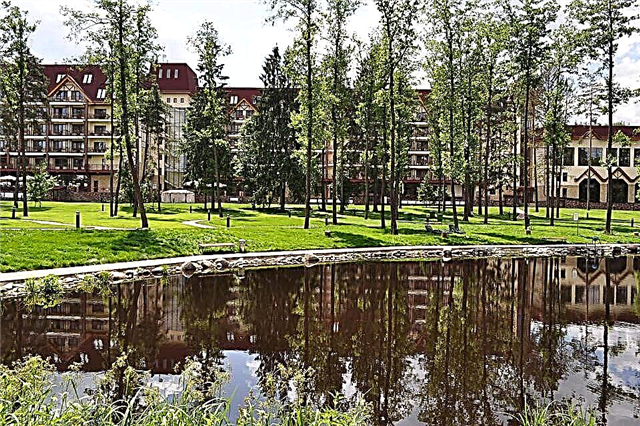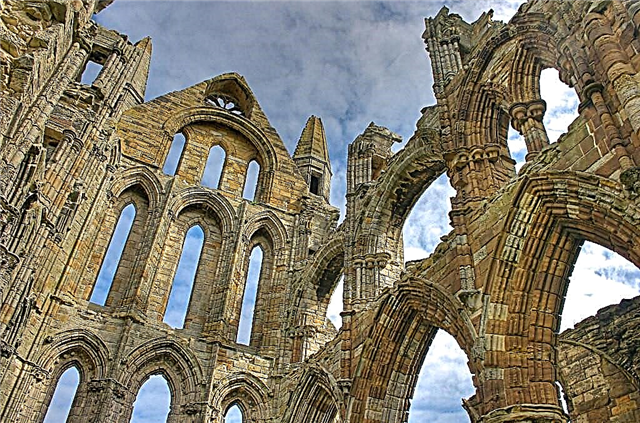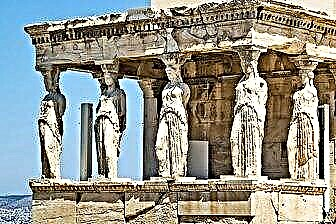The history of Athens is the history of Western civilization, its origins and essence. Everything was invented here: democracy, theater, foundations of law, philosophy and oratory. The city has stood on the fertile land of Attica for 9 thousand years, no cataclysms and wars could shake its foundations.
In the ancient heart of Athens - the sacred Acropolis, there are still pagan temples dedicated to the mighty Zeus, wise Athena and the mighty Hephaestus. The stone scenes of ancient theaters still remember the first tragedies of Euripides. The marble steps of the Panathinaikos stadium are still ready to accommodate dexterous athletes.
For millennia, Athens flourished, fell into decay, ruined and reborn again. But the city was able to maintain its status as the ancestor and source in which our entire culture was born.

The best hotels and hotels at affordable prices.
from 500 rubles / day
What to see and where to go in Athens?
The most interesting and beautiful places for walking. Photos and a short description.
Acropolis of Athens
The Acropolis is the heart of Athens, an ancient city where civilization was born thousands of years ago, giving rise to the entire modern Western world. The architectural ensemble of the Acropolis includes buildings from the pre-Hellenistic, Hellenistic, Roman, Byzantine and Ottoman periods of the history of Athens. Of greatest interest are the partially preserved walls and columns of ancient temples and theaters. The complex of the Acropolis of Athens is one of the most valuable objects of the cultural heritage of mankind.

Parthenon
Greek temple dedicated to the patroness of the city - the goddess Athena. The majestic structure was built in the 5th century BC. during the highest prosperity of the city of Athens under the ruler of Pericles. The names of the architects of the temple have survived to this day. It is believed that the masters Kallikrates and Iktin worked on the construction, and the great Phidias worked on the sculptural decoration. The interior of the Parthenon was magnificent and pompous, and the facade was painted in different colors.

Temple of Hephaestus
Temple of the 5th century BC, belonging to the Classical era of Greek history. It was erected by the will of the Athenian ruler Pericles, an outstanding commander and talented politician. The roof of the building is reinforced with slender rows of marble Doric columns, friezes are made in compliance with the canons of the Ionic style. Interestingly, from the 7th century A.D. and until the beginning of the 19th century, the Orthodox Church of St. George was located in the temple of Hephaestus.

Erechtheion
According to ancient legend, the Erechtheion was built on the site of the dispute between Athena and Poseidon, during which the gods did not share power over Attica. The temple was erected at the end of the 5th century BC. in the Ionic style, the name of the architect was lost in the thickness of the centuries. The portico of Caryatids, which was added to the temple later, is well preserved. It is a series of female column sculptures supporting the roof. The authorship is attributed to the sculptor Callimachus (according to another version - Alkamen).

Odeon of Herodes Atticus
Stone Theater, located on the southern slopes of the Acropolis. The Odeon was erected in the middle of the 2nd century BC. It was used to organize theatrical performances and musical performances. The odeon has been perfectly preserved and, moreover, it is used for its intended purpose to this day. After reconstruction in the middle of the 20th century, the stage began to host the annual Athens Festival. Since then, the best voices of the world stage have performed there.

Temple of Olympian Zeus
The grandiose construction of the temple began in the 6th century BC. under the tyrant Pisistratus, but after his overthrow, the building remained unfinished for another six centuries. The work was completed under the Roman emperor Hadrian. In the 3rd century A.D. during the sack of Athens, the temple was seriously damaged, and in the 5th century it was completely closed by order of Theodosius II. The final destruction of the temple of Olympian Zeus occurred with the decline of the Byzantine Empire. The remains of the building were discovered during excavations in the 19th century.

Tower of Winds
An octagonal building of Pentelikon marble, located in the Roman agora. According to one version, it is believed that the tower was erected in the 1st century BC. astronomer Andronicus of Kirr. The structure is 12 meters high and about 8 meters wide. In ancient times, a weather vane was installed at the top, which indicated where the wind was blowing. The walls of the tower are decorated with images of eight Greek deities responsible for the direction of the wind.

Theater of Dionysus
The theater is located in the southeastern part of the Acropolis, it was built in the 5th century BC and is the oldest theater in Athens. Works by Euripides, Aristophanes, Sophocles and Aeschylus were staged on the stage. In the 1st century BC. under Emperor Nero, a large-scale reconstruction of the theater was carried out. The scene fell into disrepair by the 4th century AD. and was gradually abandoned. Today, a large-scale theater restoration project is being carried out.
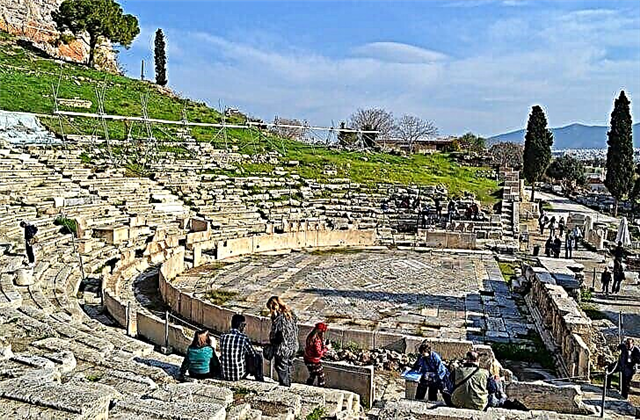
Kerameikos
The ancient city cemetery, where the most worthy representatives of Athens were buried until the 4th century. This place has been used as a necropolis since the Bronze Age. Famous military leaders, statesmen and philosophers, including Pericles, Cleisthenes, Solon, Chrysippus and Zeno, are buried here. The cemetery contains many gravestones from the Antique period, tombstones and sculptures.

Standing Attala
A covered two-story colonnade, built in the 2nd century BC. The building was built by order of the Pergamon king Atallus, who studied in Athens in his youth (for the young descendants of the royal families of the Mediterranean, this was a common practice at that time). In ancient times, the standing place served as a walking place for the townspeople. From here one could observe the square and streets of Athens, as well as various festive processions.

Panathinaikos stadium
An ancient stadium made entirely of Pentelikon marble. On its territory, the Panathenaean Games were held - a large sports and religious holiday where athletes performed, festive processions were held and ritual sacrifices were performed. The revived Olympic Games were held at the Panathinaikos Stadium at the end of the 19th century.

New Acropolis Museum
The modern building of the museum was created in 2009 by a joint project of Greek and Swiss specialists. The collection is made up of artifacts from different periods in the history of Athens. Mainly, the funds were replenished through archaeological excavations on the territory of the Acropolis. The new Acropolis Museum inherited the old collection of antiquities, which has existed since the middle of the 19th century.

Benaki Museum
Private collection, which was founded in 1930 by A. Benakis on the territory of his family mansion. The owner has been collecting the collection for 35 years and handed it over to the state. Until his death, Antonis himself served as the head of the museum. The exposition consists of works of Greek art. It displays ceramics, textiles, prints, sculptures, jewelry and church utensils. There are also several paintings by El Greco in the museum.

National Archaeological Museum
The museum is the largest collection of items of ancient Greek culture. The archaeological collection was founded at the beginning of the 19th century; in 1889, a separate building in the neoclassical style was not erected for it. The museum exhibition is divided into several collections, which include collections of prehistoric period, Cycladic art, Mycenaean art, Egyptian art and many others.

Museum of Cycladic Art
The exposition was founded in 1986 on the basis of a private collection of the influential Greek Goulandris family.Before transferring the collection to the hands of the state, it visited many world exhibitions. The museum building was designed by V. Ioannis. The collection is divided into three parts: the Bronze Age, ancient Greek art, and the art of ancient Cyprus. It should be noted that the museum contains the most complete collection of artifacts from Cypriot culture.

Byzantine Museum
The museum houses a collection of Byzantine and post-Byzantine art spanning a 15-century period. It houses an impressive collection of valuable icons. The museum was opened in 1914, in 1930 it moved to the task of the former villa of the Duchess of Piacenza. In addition to icons, the museum funds contain statues, church vestments, ceramics, engravings, manuscripts, mosaics, dishes and much more.

Cruiser Georgios Averof
A museum ship moored for eternal anchorage in the harbor of Palio Faliro. The ship was built at the beginning of the 20th century in Livorno for the needs of the Italian army, but due to economic difficulties it was sold to Greece. The cruiser took part in the First Balkan War, during the First and Second World Wars, she was captured first by the French and then by the British. In the 50s. the ship was put into reserve. In 1984 it was decided to turn the ship into a museum.

Athens Academy of Sciences
The Academy of Sciences is the main public research institution in Greece. The main building of the building in which it is located was built according to the project of F. von Hansen in 1887. The building is a true masterpiece of the neoclassical architectural style. In front of the facade there are sculptures of the thinkers Plato and Socrates, as well as statues of the ancient Greek gods - Athena and Apollo.

Syntagma Square
The square is located in the modern center of Athens. The place gained importance in the 19th century, becoming the center of the city's commercial life. The square is home to the Royal Palace of the mid-19th century, designed by F. von Gertner. Now the Greek parliament is sitting there. Syntagma Square is constantly becoming the epicenter of social unrest. Protests, strikes and other mass actions of disobedience often take place here.

Guard of Honor at the Tomb of the Unknown Soldier
A guard of honor is on duty at the walls of the Royal Palace in Syntagma Square. This is a rather unusual and even funny sight, unlike similar ceremonies in other countries. It's all about the unusual shape of the Greek soldiers, which consists of tunics, skirts, white tights and slippers with "pompoms", as well as non-standard marching during the changing of the guard. This spectacle always attracts a large number of tourists.

Church of Panagia Kapnikarea
One of the oldest Orthodox churches in Athens. The temple was erected on the ruins of a pagan sanctuary dedicated to a female deity. The first Christian churches began to appear in the city at the dawn of the Byzantine era, when the city fell into decay, and the new faith almost completely replaced the pagan cults. The Church of Panagia Kapnikarea is built in a typical Byzantine style, characterized by round domed towers.

Daphni monastery
The monastery is located 11 km. from Athens next to the Daphnian grove. It was founded in the 6th century on the site of the destroyed temple of Apollo and over time became one of the most revered shrines in Greece. The original appearance of the monastery has practically not survived; the construction of the 11th century model - the period of the heyday of the Byzantine Empire - has survived to this day. In the 13th century, Catholic monks settled in the monastery for a while, but in 1458 the entire complex of buildings was returned to the Orthodox Church.

Lycabettus
A hill in the northeastern part of Athens, which is the highest point in the city. It offers panoramic views of the Acropolis and the port of Piraeus. The hill has two peaks, on one of them there is a church, on the other - a modern theater with an open stage. You can get to the top in three ways: go up the equipped pedestrian road, use the funicular or drive in by car.

Areopagus
The hill on which the highest court of Athens, the Areopagus, gathered in ancient times. The name appears to be derived from the name of the god of war, Ares. Until the 5th century BC. The Areopagus served as the city council of elders, but from 462 BC. this body was deprived of political functions and empowered to administer civil and criminal courts. The apostle Paul also read a sermon on the hill.

Hill of the Muses
A city hill with a monument at the top, erected in honor of the Roman Gaius Julius Philopappus, who more than once helped Athens with money. Since the II century, the place is better known as the Hill of Philopappos, earlier it was named after the ancient Greek philosopher, poet and musician Musaios (translated as “muse”). On the slopes of the hill, there is a natural park with no infrastructure.

Plaka
The old district of Athens, built up mainly with houses from the 18th century. Almost all buildings are on ancient foundations. On the territory of Plaka, there is the oldest street in the city, which has retained its direction since the time of Ancient Greece. A large number of former residential buildings have been converted into museums, souvenir shops and cafes, as residents massively moved from Plaka in the 19th century.

Monastiraki
The City Market, located in the area of the same name, is one of the most popular shopping venues in Athens. Monastiraki belongs to the category of flea markets. Many unnecessary things are sold here, homemade shoes, antiques, coins, furniture and other collectible antiquities. On the market you can see a unique exposition of the Greek way of life of the past centuries.

Anafiotika
A unique quarter in the old Plaka area, which is adjacent to the Acropolis. The winding and slightly crooked streets of Anafiotika are built up with typical white Mediterranean houses. The area was formed as a result of the resettlement of builders from the island of Anafi to Athens. They arrived in the capital at the invitation of the Greek king Otto in order to build a palace for his special order.
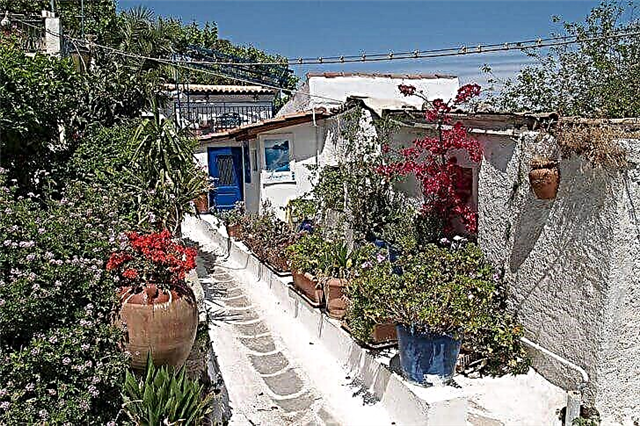
National garden
A 16 hectare park located in the heart of Athens. Five hundred species of various plants grow on its territory. Every third tree is over 100 years old. Ancient Greek ruins are preserved within the National Garden - the remains of walls, columns and fragments of mosaics. The garden was created in the 19th century at the behest of Queen Amalia. At first, vegetables and fruits were grown there for the royal cuisine. Now the former vegetable garden has turned into a green oasis in the middle of the stone city.
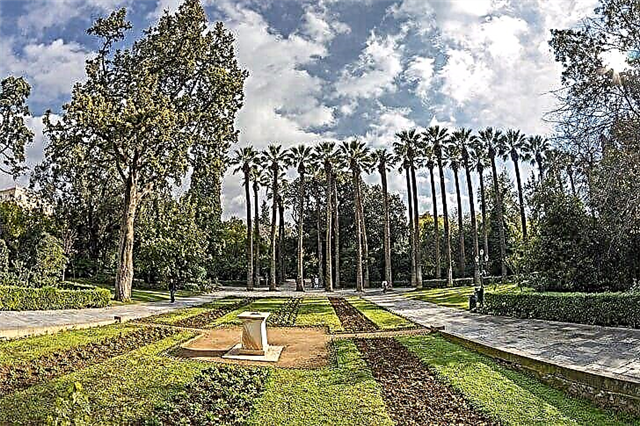
Flisvos Marina
A modern yacht dock, designed for the simultaneous berthing of 200 ships. An excellent infrastructure for tourists has been created on the embankment of the marina: luxury boutiques, restaurants, a picturesque promenade. At the berths, you can admire luxury yachts under the flags of different countries, as well as, if you wish, take a refreshing boat trip along the coast.




